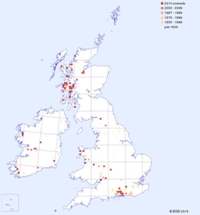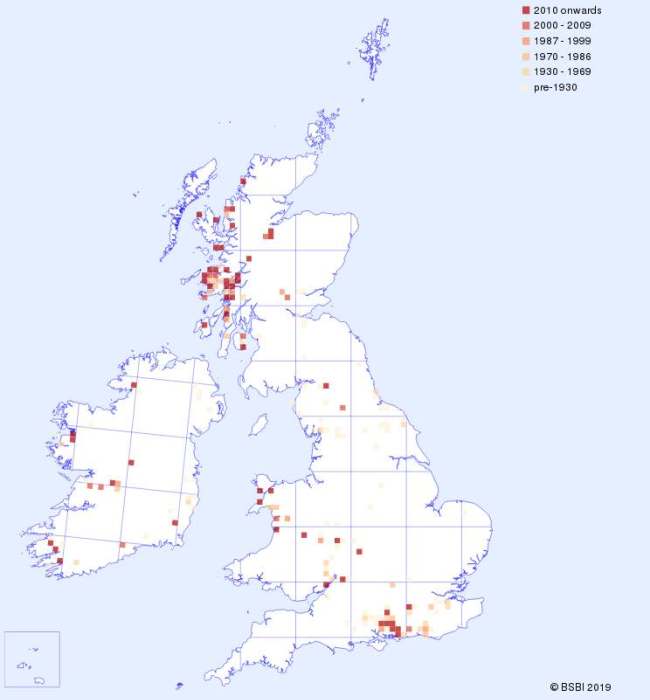Sword-leaved Helleborine is one of our most highly protected orchids, having disappeared from more than three quarters of its original range in Britain over the past 200 years as a result of habitat loss and destruction. In the UK it is classified as Nationally Scarce and protected under the Wildlife and Countryside Act; and, in Ireland, under the Flora (Protection) Order. In addition this orchid has also been the subject of a Plantlife Back from the Brink project. Some advances in our understanding of the plant's biology may help us to prevent it from disappearing completely. Although a woodland plant, Cephalanthera longifolia does better in open positions where light penetrates the canopy, or on the edge of woodland transitioning into grassy habitats. Sword-leaved Helleborine flowers from mid May to mid June. Although its flowers are similar to those of White Helleborine Cephalanthera damasonium, the leaves of Sword-leaved Helleborine are, as the name suggests, long and narrow and they are a defining characteristic in identification. There are scattered populations of this orchid throughout the UK, but its two strongholds are in Aberdeenshire in Scotland and in Hampshire in England. In Wales there are a few plants remaining in scattered sites. On mainland Europe Cephalanthera longifolia appears from Scandinavia and Finland in the north to as far south as the Mediterranean region.
| Distribution Map | Key Features | |
 |
Records for Sword-leaved Helleborine from BSBI are shown on the map with most recent in front. (Hover the mouse over the small map to expand it.) |
Plant: 15 to 65cm in height but much shorter in exposed positions; stem green with 2 to 4 whitish sheaths at the base and scattered hairs towards the tip. |
Image Gallery for Sword-leaved Helleborine Cephalanthera longifolia
| Pollination | Taxonomy & Hybrids |
The flowers are pollinated by small solitary bees despite no nectar being produced. The insects are thought to be attracted by the bright yellow patch of pseudopollen on the lips. |
The specific name longifolia means long-leaved. |
Articles about Sword-leaved Helleborine in JHOS
